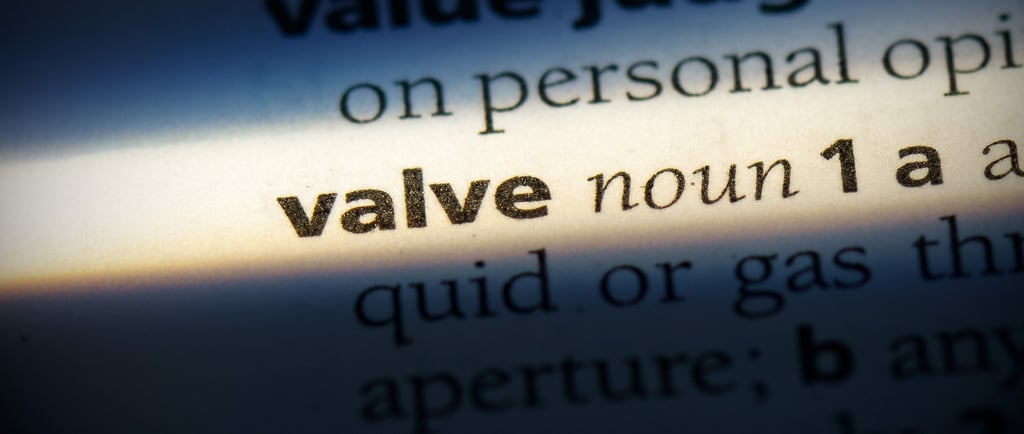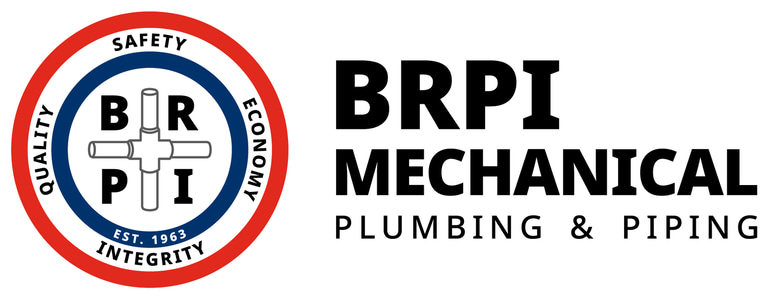What Did the Plumber Just Say? 29 Plumbing Terms Every Homeowner Should Know
FAQSRESIDENTIAL PLUMBINGCOST-SAVING PLUMBING TIPS
3/12/20255 min read


You’re standing in your kitchen, listening to your plumber explain the problem, but half of what they’re saying might as well be in another language. P-traps? Flanges? Backflow preventers? What does it all mean?!
We’ve all been there—nodding along, hoping for the best while secretly Googling under the table. But don’t worry! This simple, no-nonsense glossary will help you decode plumber-speak, understand what’s happening in your home, and even avoid getting overcharged on unnecessary fixes.
Here are 29 must-know plumbing terms that will make you feel like a pro (or at least keep you from looking lost).
🪠 The Essentials: What Every Homeowner Needs to Know
1. Shutoff Valve – Your Home’s Emergency Stop Button
The most important plumbing component in your house! This valve controls the water flow to your entire home or a specific fixture. Knowing where your main shutoff valve is could save your home from major water damage in an emergency.
2. P-Trap – The Pipe That Stops Smells
That curved pipe under your sink isn’t just for looks—it holds water to block nasty sewer gases from creeping into your home. If your sink smells bad, the P-trap might be dry or clogged.
3. O-Ring – The Tiny Part That Prevents Big Leaks
A small rubber ring that seals connections in faucets and showerheads. When this wears out, you get leaks—so replacing it is an easy (and cheap) fix!
4. Flange – The Piece That Keeps Your Toilet Secure
Ever heard a plumber say your toilet flange is broken? This circular ring connects your toilet to the floor and drainpipe. If it cracks, you might have leaks or a wobbly toilet.
5. Supply Line – The Pipe That Brings Water to You
A flexible tube that carries water to your faucets, toilets, and appliances. If it bursts, you’ll have a flood—so always check for wear and tear!
🔧 Common Plumbing Issues (And How to Sound Like a Pro)
6. Backflow – The Water You Don’t Want Flowing Back
Backflow happens when contaminated water flows the wrong way into your clean water supply. This is why homes have backflow preventers to keep drinking water safe.
7. Water Hammer – That Loud Banging Noise in Your Pipes
Ever hear a sudden banging noise when turning off a faucet? That’s a water hammer—caused by high water pressure slamming against closed valves. It can damage your pipes over time.
8. Air Gap – The Invisible Shield Against Contamination
That small gap between your sink faucet and the drain? It prevents dirty water from backing up into your clean water system. Essential for dishwashers and plumbing safety!
9. Sump Pump – Your Basement’s Flood Protector
A sump pump removes water from your basement or crawlspace, preventing flooding. If you have one, make sure it works—especially before a storm!
10. Anode Rod – The Secret to a Long-Lasting Water Heater
Inside your water heater, an anode rod attracts rust and corrosion, saving the tank itself. Replacing this every few years can extend the life of your water heater significantly.
🚿 Fixtures & Fittings: What’s Behind Your Faucets?
11. T&P Valve (Temperature & Pressure Relief Valve)
A safety valve on your water heater that releases excess pressure to prevent explosions. If it’s leaking, don’t ignore it—but never plug the T&P valve to stop a drip, as this “fix” can lead to an explosion!
12. Diverter Valve – The Magic Behind Your Showerhead
Ever wonder how your tub and shower use the same faucet? The diverter valve switches the water flow from the tub to the showerhead when you pull the lever.
13. Cartridge – The Heart of Your Faucet
If your faucet is leaking, the cartridge inside might need replacing. It controls water flow and temperature—so if turning the handle doesn’t work right, this might be why.
14. Wax Ring – What Keeps Your Toilet from Leaking
A soft wax seal under your toilet that prevents water and sewer gases from escaping. If your toilet rocks or leaks, the wax ring might need replacing.
15. Check Valve – The One-Way Gate for Water
A check valve lets water flow in one direction and stops it from going backward—crucial for sump pumps and preventing contamination.
💦 Pipe & Drain Talk: What Runs Behind Your Walls
16. ABS & PVC Pipes – The Plastic Pipes That Run Your Plumbing
Most modern homes use ABS (black) or PVC (white) pipes for drainage. Older homes might have metal pipes, which can corrode over time.
17. Cleanout – The Access Point for Clogs
A small cap on your main drain line that plumbers use to clear serious clogs. If you have slow drains, your cleanout might need a check-up!
18. Greywater vs. Blackwater – The Two Types of Wastewater
Greywater: Used water from sinks, showers, and laundry.
Blackwater: Wastewater from toilets (aka sewage).
19. Trap Arm – The Hidden Pipe That Keeps Drains Flowing
The horizontal pipe between your P-trap and the wall drain. If it's clogged or too long, your sink might drain slowly.
20. Snake (Drain Auger) – Your Best Friend for Clogs
A long, flexible tool used to clear stubborn clogs in drains. Every homeowner should have a small one!
🕵️♂️ Plumbing Power Moves: Know These to Avoid Scams
21. Water Pressure Regulator – The Silent Pipe Protector
This controls the pressure of water entering your home. Too much pressure can damage appliances and pipes over time.
22. Dielectric Union – The Secret to Preventing Pipe Corrosion
If copper and steel pipes touch, they corrode. This special fitting prevents that, extending the life of your plumbing system.
23. Pipe Dope & Teflon Tape – The Leak Stoppers
Used to seal pipe threads and prevent leaks at connection points. A must-have for DIY repairs!
24. Pressure Vacuum Breaker – The Hidden Hero in Your Sprinkler System
A special valve that prevents dirty sprinkler water from flowing back into your drinking water. Essential for irrigation systems!
25. Thermal Expansion Tank – Your Water Heater’s Safety Net
If water expands inside your heater, this absorbs the pressure, preventing leaks and extending the unit’s lifespan.
🎓 Bonus Terms for the Homeowner Who Wants to Be a Pro
26. Float Valve – The Device That Stops Overflows
Found in toilets and some water tanks, this valve automatically shuts off water flow when a tank reaches its fill level. If your toilet runs nonstop, this is likely the culprit!
27. Escutcheon – The Decorative Cover That Hides Ugly Pipes
That metal or plastic ring around pipes where they enter a wall? That’s an escutcheon. It covers holes and gaps, making everything look cleaner.
28. Frost-Free Hose Bib – The Outdoor Faucet That Won’t Freeze
A special outdoor faucet designed to prevent freezing in winter by keeping the shutoff valve inside your house where it stays warmer.
29. Manifold – Your Plumbing’s Command Center
The manifold is the central hub that distributes water throughout your home, offering better pressure control and individual shutoffs for each water line. Total plumbing power!
Final Thoughts
Now that you’ve got these plumbing terms down, you won’t be left scratching your head the next time a plumber visits. Understanding your home’s plumbing means fewer surprises, smarter decisions, and maybe even some money saved along the way!
Need to brush up on more home maintenance tips? Stay tuned for more practical guides to keep your home running smoothly. 🚿🔧
Contact
Main Office
Social
3560 S 2200 W
West Valley City, UT 84119
P.O. Box 25123
Salt Lake City, UT 84125
Monday – Friday:
7:00 am – 3:30 pm
Billing & Mailing Address
Hours
© Budd M. Rich Plumbing Company, DBA BRPI Mechanical. All rights reserved.
